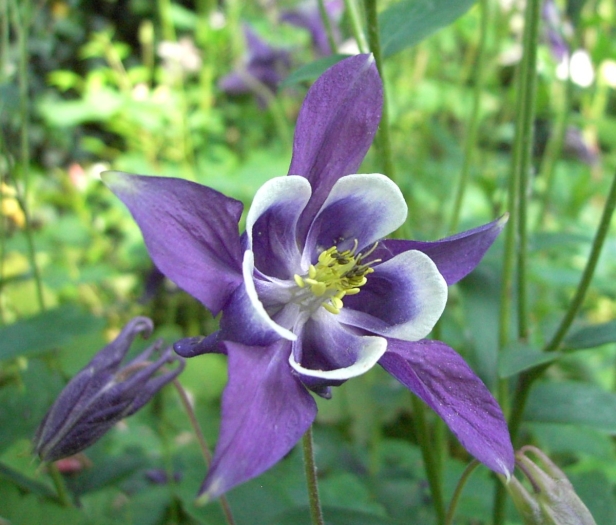European Columbine
(Aquilegia vulgaris)
European Columbine (Aquilegia vulgaris)
/
/

Arne Nordmann ([[user:norro]]), Germany {{GFDL}}
CC BY-SA 3.0











































































Estimated Native Range
Summary
European Columbine is appreciated for its unique flower shape and the variety of colors it offers, making it a popular choice for cottage gardens, borders, and naturalistic plantings. It is relatively easy to maintain, but spent flower-heads should be removed to prevent self-seeding, which can lead to a weedy appearance. It prefers moist, well-drained soil and can tolerate full sun to part shade. While it can be a short-lived perennial, many gardeners treat it as a biennial. Aquilegia vulgaris can be potentially invasive outside its native range, so gardeners should check local guidelines before planting.CC BY-SA 4.0
Plant Description
- Plant Type: Herb
- Height: 1.5-3 feet
- Width: 1-2 feet
- Growth Rate: Moderate
- Flower Color: Blue, Pink, Purple, Red, White
- Flowering Season: Spring
- Leaf Retention: Deciduous
Growth Requirements
- Sun: Full Sun, Part Shade
- Water: Medium
- Drainage: Slow, Medium
Common Uses
Bee Garden, Bird Garden, Border Plant, Butterfly Garden, Deer Resistant, Drought Tolerant, Hummingbird Garden, Potted Plant, Rabbit Resistant, Rock Garden, Showy Flowers
Natural Habitat
Meadows, woodlands, and rocky slopes in Europe
Other Names
Common Names: Columbine, Common Columbine, Granny’s Nightcap, Granny’s Bonnet, European Crowfoot, Capon’s-Feather, Granny Bonnets, Granny’s-Bonnet, Columbine, Gemeine Akelei
Scientific Names: , Aquilegia vulgaris, Aquilegia mollis, Aquilegia ruscinonensis, Aquilegia nemoralis, Aquilegia vulgaris var. stellata, Aquilegia arbascensis, Aquilegia vulgaris f. praecox, Aquilegia vulgaris var. glandulosopilosa, Aquilegia vulgaris var. nemoralis
GBIF Accepted Name: Aquilegia vulgaris L.